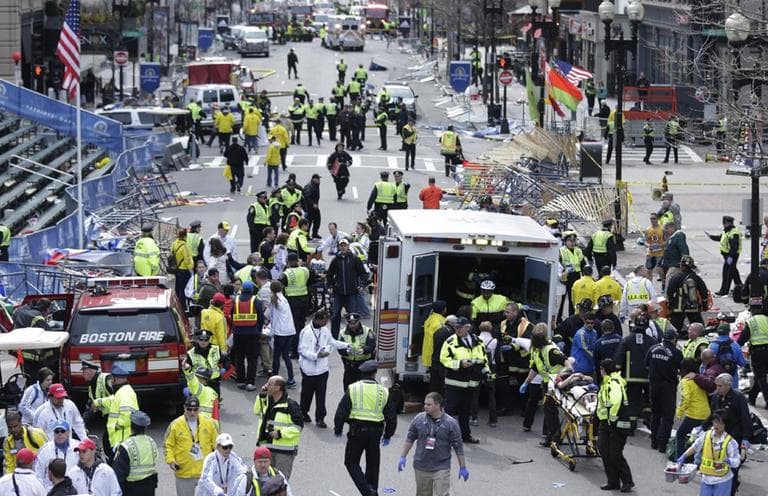Advertisement
Before Marathon Bombings, Aurora Helped Boston Prepare

Almost a year ago, Dr. Ron Walls, an emergency room doctor in Boston opened an email from Dr. Richard Zane, a colleague in Colorado.
It was about the mass shooting in Aurora, and it had links to 911 calls that night. In a movie theater, 12 people were shot and killed and 58 were injured by shooter, James Holmes.
In one hour, 23 patients arrived at the University of Colorado Hospital with injuries more common on battlefields than in emergency rooms.
The very first thought that I had was, "Oh my goodness, are we really ready for this?"
Dr. Ron Walls
"After the dust had settled and we'd done lots of analysis, I thought, we need to share this, we need to show it to other people because they're going to learn from this," Zane told Here & Now.
That email provided lessons for Dr. Walls at Brigham and Women's Hospital in Boston — in particular, the timeline of the 23 critically-injured patients arriving in rapid succession.
"It was a really dramatic effect to see so many critical patients arrive that fast," Walls told Here & Now, noting that Brigham and Women's had done more than 70 emergency preparedness drills in the previous six years. "I won't say we were smug about it, but we really felt that we were ready. And what happened to me in the moment I looked at that 23-mark hour from the University of Colorado, the very first thought that I had was, 'Oh my goodness, are we really ready for this?'"
About six months later, on April 15, Brigham and Women's Hospital received the same number of critically-injured patients as the University of Colorado had — 23, in just one hour.
Advertisement
In addition to strategies for treating large numbers of critical patients, Zane also counseled Walls on providing support to the caregivers.
"We had to think very hard about how we put in place support services — not just the 23 patients who were severely injured, but also the psychological component of having seen things that one should never have to see," Zane said of the Aurora shooting. "It affected the people who took care of these patients. It affected the people who lived with the people who took care of these patients. It will forever affect the community."
Guest
- Dr. Ron Walls, Chairman of the Department of Emergency Medicine at Brigham and Women's Hospital in Boston.
- Dr. Richard Zane, Chairman of the Department of Emergency Medicine at the University of Colorado Hospital in Denver.
This segment aired on August 27, 2013.